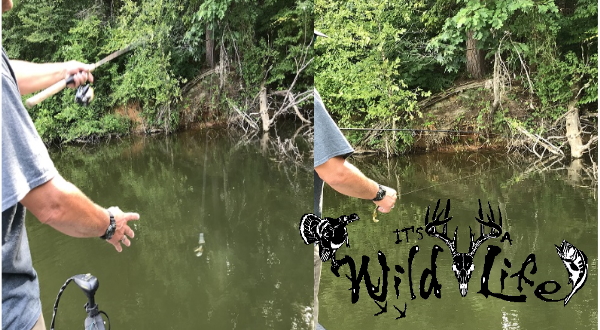
Story and photos by Sam Seamster
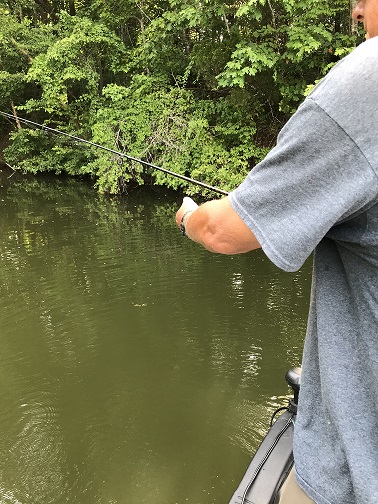 When thinking about casting a fishing rod, most folks don’t consider the dynamics. So, what constitutes a good cast? To some, that would be not hooking themselves in the head or not tangling the line. To others it could be skipping a lure way back under an overhanging bush. All of these would be correct! Many people think that mastering the fly rod is complex, but there should be importance placed on other forms of casting as well. But for this discussion, we will concentrate on the familiar spinning reel.
When thinking about casting a fishing rod, most folks don’t consider the dynamics. So, what constitutes a good cast? To some, that would be not hooking themselves in the head or not tangling the line. To others it could be skipping a lure way back under an overhanging bush. All of these would be correct! Many people think that mastering the fly rod is complex, but there should be importance placed on other forms of casting as well. But for this discussion, we will concentrate on the familiar spinning reel.
The spinning reel has been around for many years and is a common way to deliver a lure or live bait to a fish. My hope is that once you have read this article, you will be a better caster and understand a few ways to become a more proficient fisherman.
Beginners Class
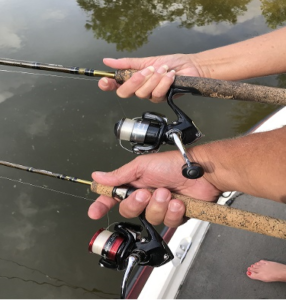 Let’s start by establishing some standards for our discussion. Let’s use a medium size reel with a six- to 15-pound test line and a light to heavy action rod. This size rod and reel is familiar for most people.
Let’s start by establishing some standards for our discussion. Let’s use a medium size reel with a six- to 15-pound test line and a light to heavy action rod. This size rod and reel is familiar for most people.
Hand placement: The reel foot is attached to the rod itself and is where your hand should go with the leg of the reel foot sliding between your fingers. I use my right hand for casting but if you are a left hander just reverse the handle. I slide the leg of the foot between my fingers and allow the rod to fit into the palm of my hand, gripping it firmly.
If you have a small hand, I suggest putting the leg of the reel between the pinky and ring finger; this places your hand higher up on the rod handle so you can hold the line in your index finger. When I have youngsters fishing with me, I try to make these changes so they can handle the rod better. This will also help women with small hands.
The line roller is where the line comes off the spool and it will be turned so it is closest to the rod and by your hand. You will reach out with your index finger and catch the line, almost like a trigger, and hold it there until you’re ready to cast. Next, flip the bell to open the spool; as long as you hold the line in your index finger, it will not come off the spool.
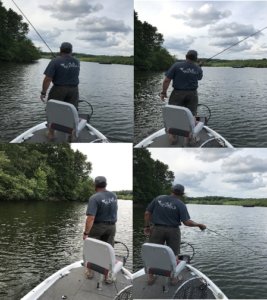 You can cast with one hand or two. Some people place their left hand on the rod, just below the reel, and use both hands. To cast, allow your arm to bend at the elbow while moving the rod back over your shoulder to the three o’ clock position. When you’re ready, move your arm forward quickly. At the same time, allow your elbow to straighten to the 10 o’clock position and release your index finger to allow the line to flow out.
You can cast with one hand or two. Some people place their left hand on the rod, just below the reel, and use both hands. To cast, allow your arm to bend at the elbow while moving the rod back over your shoulder to the three o’ clock position. When you’re ready, move your arm forward quickly. At the same time, allow your elbow to straighten to the 10 o’clock position and release your index finger to allow the line to flow out.
Once the lure lands in the water, place your left hand on the reel handle and begin to turn. The bell will flip back over automatically and start collecting line. This is the basic method you would use to cast and reel an open face rod and reel.
Casting to the Next Level
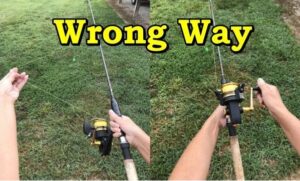 Your casting abilities are limited only by you. Once you’re proficient with the basic cast, start to experiment with different arm angles. Think about a clock’s face and the hands. Starting with the seven o’ clock position, then move all the way around to the five o’ clock position. Each hour number represents an angle you can cast from. Each angle serves a different purpose. It all depends on how you are fishing.
Your casting abilities are limited only by you. Once you’re proficient with the basic cast, start to experiment with different arm angles. Think about a clock’s face and the hands. Starting with the seven o’ clock position, then move all the way around to the five o’ clock position. Each hour number represents an angle you can cast from. Each angle serves a different purpose. It all depends on how you are fishing.
When you attempt to cast under low hanging trees or to place a bait quietly into the water, choose a low casting position to keep the lure low to the water surface and out of the overhanging limbs. The lower approach reduces splash and lessens the chances of spooking fish.
When it Counts Most
Let’s say you’re fishing with your buddies in a boat and there is a fisherman on either side of you. What do you do? Not fish? Absolutely not! Here are a few other casts to add to your arsenal to impress your buddies with your accuracy.
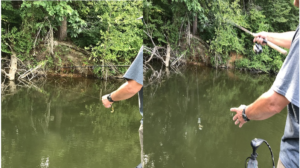 Pitching: Start by allowing enough line out so that your lure hangs close to your reel. Grasp the lure in your free hand. When you’re ready to cast, flick your wrist and move your casting arm forward toward your intended target, freeing the lure from your hand. The lure should glide through the air and land on target. The only movement of your rod is straight forward. This is also a great method for fishing close to the bank.
Pitching: Start by allowing enough line out so that your lure hangs close to your reel. Grasp the lure in your free hand. When you’re ready to cast, flick your wrist and move your casting arm forward toward your intended target, freeing the lure from your hand. The lure should glide through the air and land on target. The only movement of your rod is straight forward. This is also a great method for fishing close to the bank.
The second method is shooting your lure to the target. Most people associate this with dock fishing but this is a versatile way to cast a lure. You start the same way as pitching but the difference is in the lure hand. Grasp the lure with your free hand and pull it back toward yourself. Just as you see the rod tip begin to bend back toward you, release the lure. The rod generates the energy needed to propel the lure to its intended target. One pointer about this method: the lure will cast in the opposite direction to the bend of the rod tip. To get the lure going straight, the tip of the rod should come back under the rod shaft in a straight line.
Note: These methods are not recommended if you are using a multi-hooked lure such as a crank bait.
Breaking a Cast
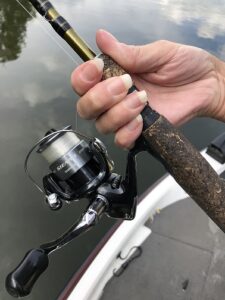 Everyone will eventually overcast. You may cast too hard, launching the lure into the bushes, up against the bank, or against a dock. You need to quickly create more friction on the line to slow the lure. There are a couple ways to achieve this.
Everyone will eventually overcast. You may cast too hard, launching the lure into the bushes, up against the bank, or against a dock. You need to quickly create more friction on the line to slow the lure. There are a couple ways to achieve this.
Pull Back: Your rod tip is most likely at a nine to 10 o’ clock position. Bring your rod tip back quickly to a one o’clock position, even though the line is peeling through the eyes of the rod.
Grab or Pinch: Use your free hand to grasp the line peeling off the reel. Allowing the line to brush against your hand will slow the lure. To immediately stop the lure in flight, pinch the line off.
I like using the second method best. If I know my cast will end up in an area that will hang up, I will simply pinch it off and stop it short. It’s always easier to cast again than to go over and free the lure from debris.
Practice makes Perfect
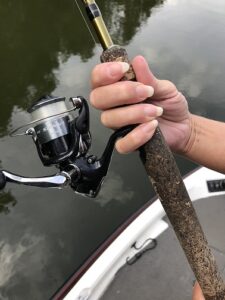 If you take some time to practice these casting methods you will become proficient and accurate. I have spent many hours practicing casting and pitching into a five-gallon bucket in the yard. The more you practice, the better you will become. I hope this article encourages you to get out and go fishing and inspires you to try some new methods of casting.
If you take some time to practice these casting methods you will become proficient and accurate. I have spent many hours practicing casting and pitching into a five-gallon bucket in the yard. The more you practice, the better you will become. I hope this article encourages you to get out and go fishing and inspires you to try some new methods of casting.
It’s A Wild Life and I’ll see you on the water.
Check out Sam Seamster’s Facebook page and YouTube Channel: Wild Life Adventures![]()
![]()































































































